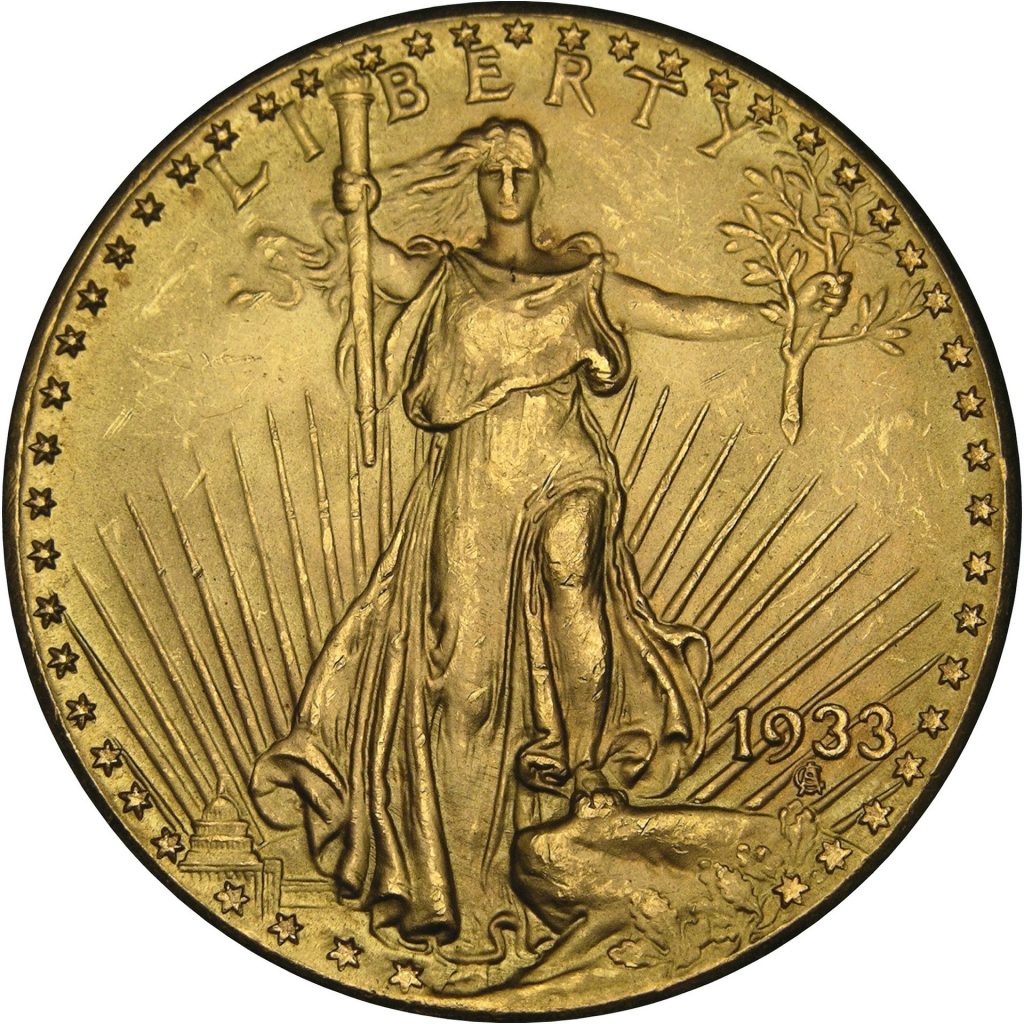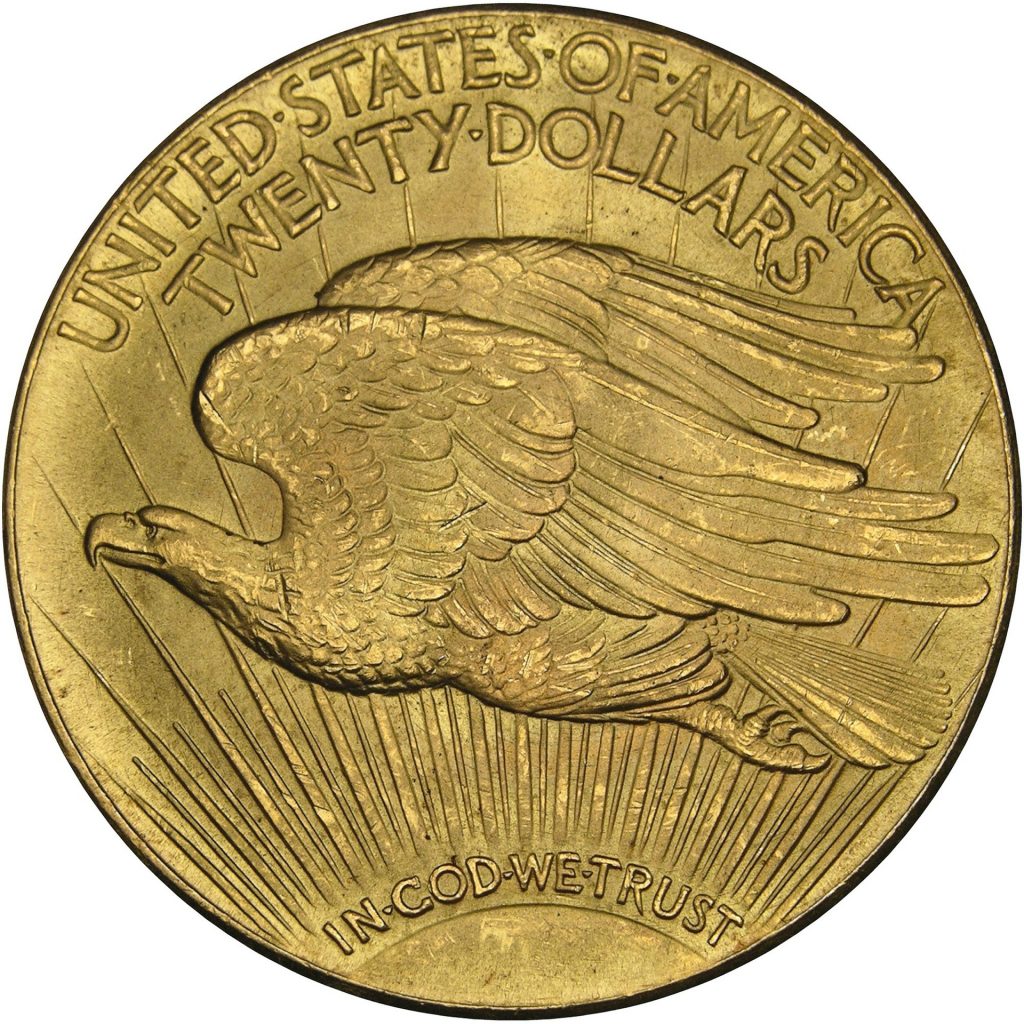1933 Double Eagle: The Prodigal Child of U.S. Coinage
The 1933 Double Eagle is one of the most enigmatic and rare coins known in American history. In June 2021, the coin sold for an astonishing $18.9 million, being noted as the most expensive and valuable coin put up for auction. But what makes it so alluring? What made the 1933 Double Eagle so elusive to the private citizen? How did it end up in an auction? Where was it before the auction? These are but a few of the questions surrounding the extravagant and legendary numismatist treasure.
History
The Double Eagle $20 coin, while minted in 1933, was originally designed in 1907 by Augustus Saint-Gaudens per the wishes of President Theodore Roosevelt.
Roosevelt wanted a coin he felt matched the majesty of America and mirrored those of ancient Greece. As a result, a high-relief coin was created. However, the coin was never officially monetized. The U.S. government didn’t acknowledge the coin as legal tender. They were all ordered to be smelted except the two that were sent to The Smithsonian.
Franklin D. Roosevelt saw the banking crisis as a major threat to the economy. And it was. To remedy the loss in gold volume being held by the government as tender backing, Roosevelt issued order 6102. In the 1933 order, all private citizens were required to surrender specified gold, including coins, to the United States government for smelting, which took place in 1934. In return, the citizens were given paper money to compensate for their exchange. The banking crisis was ending as the U.S. regained its gold backing.
Why So Valuable?
A majority of the 1933 Double Eagle coins were destroyed, but some escaped. There is mystery surrounding how the coins were removed from the vault, but nothing has been solidified. Until 2003, the wide-standing belief was that there were three coins available for the public to consume in some fashion. Two reside in the Smithsonian, while one was brought over during a private sale by a coin dealer named Stephen Fenton in 1996.
During his sale, Fenton was apprehended by Secret Service agents, given that the coin was technically not legal tender and could be considered a forgery or worse. A fierce legal battle concluded in a settlement, where both parties benefited, instead of the charges brought up against Fenton. After, the coin was brought into U.S. custody at the World Trade Center. The coin was later transported from the World Trade Center two months before the cataclysmic events of 9/11, saving the coin from desecration once again.
Because they weren’t truly accounted for, a handful still lurked in the possession of one Joan Switt Langbord—without her knowledge. Allegedly, her father, Israel Switt, came into possession of these coins during the height of the 1933 Double Eagle. She discovered the coins at the bottom of a safe deposit box, as the story goes. After a series of legal battles, she voluntarily delivered the coins to the U.S. Secret Service. These coins are now in possession of the United States government.
What About the Auctioned Coin?
The 1933 Double Eagle that was auctioned appears to be the same one that Fenton brought over. It was a splendor to behold its first auction by Sotheby’s in 2002 for approximately $7.6 million. After all, it was the first time the coin was being legally recognized. It also needed to be officially authenticated as legal tender and was bought for $20 along with its $7.6 million price tag.
However, its original light was eclipsed when it sold earlier this year. Fenton’s coin has seen its fair share of battles and settlements, but it is still heralded as one of the most influential and enshrouded heirlooms in U.S. history. The 1933 Double Eagle $20 coin sparked curiosities outside of the numismatist industry and financial sectors. With four well-known books, two fiction and two non-fiction, and a documentary accounting for the mystery of the coin itself, it’s no wonder the 1933 Double Eagle is among one of the most curious American oddities known to historians.
Remember, while you may not have one of the reported coins sitting in your collection, it’s always a good idea to have any rarities that you find appraised. Like Joan Switt Langbord, the results may surprise you.




